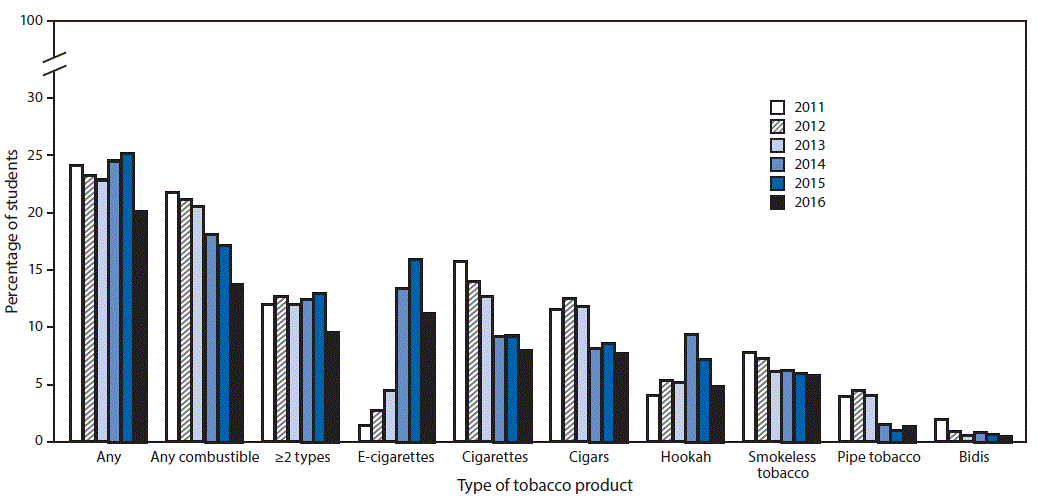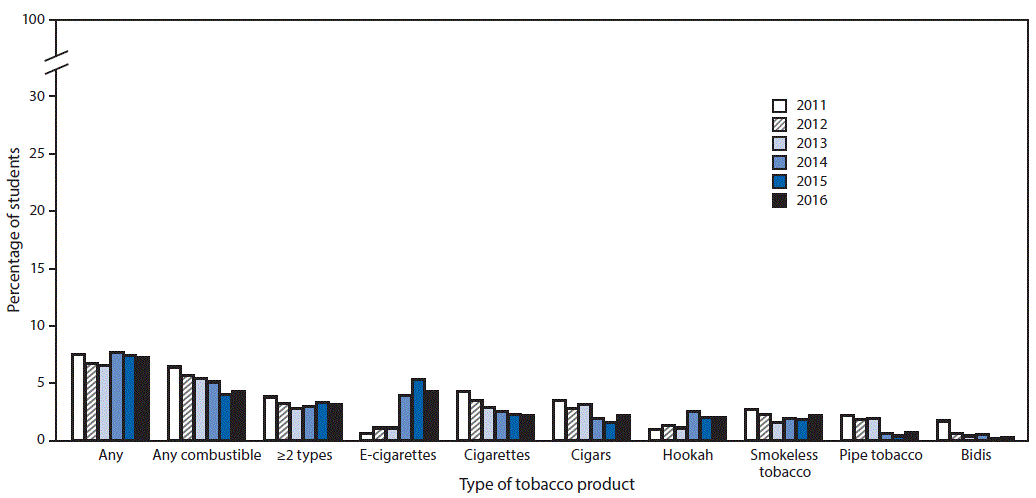There is good news and bad news from the 2016 National Youth Tobacco Survey, published in the Morbidity and Mortality Weekly Report.
The bad news is that teenagers are still smoking and 3.9 million of them are current tobacco users (having a tobacco product in the past 30 days) - a number made even more upsetting by the fact that nine out of ten cigarette smokers first try smoking by age 18. As we have long said, smoking is a pediatric disease and if we can end it in kids, few adults will take it up.
The good news is that that use dropped from 4.7 million in 2015.
The usage of most products decreased to some extent but there was a significant decrease in the usage of vaping products, or e-cigarettes. What does that mean? Vaping is being used for smoking cessation, or harm reduction, or as a rebellious experiment, but it is not leading kids into cigarettes, or something would be increasing.
There is room for improvement. E-cigarettes, which are battery-powered devices that usually contain a nicotine-based liquid that is vaporized and inhaled - a.k.a. vape-pens, hookah-pens, e-hookahs, e-cigars, e-pipes, personal vaporizers or mods - are still the most commonly used tobacco product among teens for the third consecutive year, used by roughly 11 percent of high school and 4 percent of middle school students. These types of products became very popular in the past few years, and there was concern that they might lead to smoking.
That is not the case. The report also analyzed the use of cigars, smokeless tobacco (chewing tobacco/snuff/dip, snus, and dissolvable tobacco), hookahs (water pipes used to smoke tobacco), pipe tobacco (not water pipe) and bidis (small imported cigarettes wrapped in a leaf). The data from the last five years show a decrease across the board. In the 'any' category at the far left, there is an overall decline from 24.2 percent in 2011 to 20.2 percent in 2016. There is an even larger decrease (21.8% to 13.8%) when isolating the "combustible tobacco products" — they really should break out cigarettes, which is the only killer in the group, and stop lumping in non-inhaled products like pipes—from the others. Use of almost all categories of combustible products have decreased in the last five years, including cigarette smoking (15.8% to 8.0%), cigars (11.6% to 7.7%), pipe tobacco (4.0% to 1.4%) and bidis (2.0% to 0.5%).
These data are hard to put into an overall scheme, however, because the use of e-cigarettes (fourth column from the left) went from 1.5% in 2011 to 11.3% in 2016. That said, the popularity of e-cigarettes among teens may be coming to an end. E-cigarette users dove sharply, going from 3 million in 2015 to just under 2.2 million in 2016.

Figure 1. Estimated percentage of high school students who currently use tobacco products.
Not surprisingly, many of the teens were not using just one of the above tobacco products — 1.8 million of them used two or more in the 30 days prior to being surveyed.
The FDA Commissioner, Scott Gottlieb, commented on the report, saying that the FDA is making a commitment by focusing on messaging to raise awareness and shift beliefs by changing behaviors through efforts such as the “The Real Cost” campaign that launched in 2014. (1) In addition, the FDA is enforcing new regulations from August, 2016, that make it illegal to sell e-cigarettes, cigars, hookah tobacco and pipe tobacco to anyone under 18 in person and online.
Notes:
(1) The entire statement from Scott Gottlieb, FDA Commissioner, can be found here.
Figure of Estimated percentage of middle school students who currently use tobacco products.

References:
https://www.cdc.gov/media/releases/2017/p0615-youth-tobacco.html



